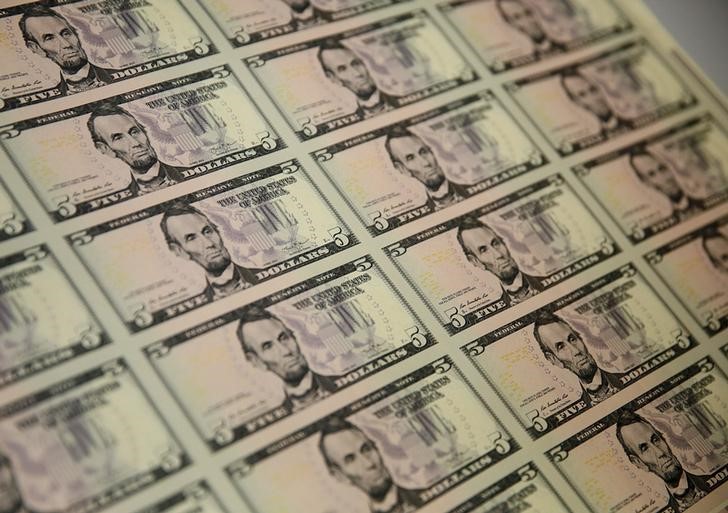Investing.com - The dollar remained lower against the other major currencies on Tuesday, after the release of disappointing manufacturing activity from the New York area and as market sentiment still remained fragile.
USD/JPY was down 0.65% at 113.85.
The Federal Reserve Bank of New York said that its general business conditions index improved to -16.7 this month from a reading of -19.4 in January. Analysts had expected the index to rise to -10.0 in February.
Markets were still jittery after a meeting between oil ministers from Saudi Arabia, Russia, Qatar and Venezuela ended with consensus to freeze output, but not to cut production.
EUR/USD edged up 0.11% to trade at 1.1167.
The euro found support after European Central Bank President Mario Draghi said on Monday that the central bank would not hesitate to act to boost euro zone growth and inflation, hinting at the possibility of further easing measures.
Meanwhile, data on Tuesday showed that German economic sentiment fell sharply this month, amid concerns over falling oil prices, slowing global growth and heightened market volatility.
The ZEW index of German economic sentiment fell to 1 this month from 10.2 in January, but was still slightly better than economists’ forecasts for a reading of zero.
Elsewhere, the dollar moved higher against the pound, with GBP/USD down 0.53% at 1.4360 and was steady against the Swiss franc, with USD/CHF at 0.9862.
Sterling strengthened after an opinion polls showed that there was a clear majority in favor of Britain remaining in the European Union.
Separately, the U.K. Office for National Statistics said the rate of consumer price inflation rose by 0.3% last month, matching forecasts and up from 0.2% in December.
Core CPI, which excludes food, energy, alcohol, and tobacco costs rose at a rate of 1.2% last month, below forecasts for 1.3% and down from 1.4% in December.
Meanwhile, the Australian dollar was stronger, with AUD/USD up 0.25% at 0.7156, while NZD/USD tumbled 0.96% to 0.6584.
In the minutes of its February policy meeting on Tuesday, the Reserve Bank of Australia said that record-low interest rates are helping consumer spending and house building while a lower currency is improving firms' competitiveness.
USD/CAD declined 0.36% to trade at 1.3788, as the rebound in oil prices helped the commodity-related Canadian dollar.
Statistics Canada reported on Tuesday that manufacturing sales increased by 1.2% in December, beating expectations for a 0.7% rise. Manufacturing sales gained 1.2% in November, whose figure was revised from a previously estimated increase of 1.0%.
The U.S. dollar index, which measures the greenback’s strength against a trade-weighted basket of six major currencies, was down 0.24% at 96.52.
